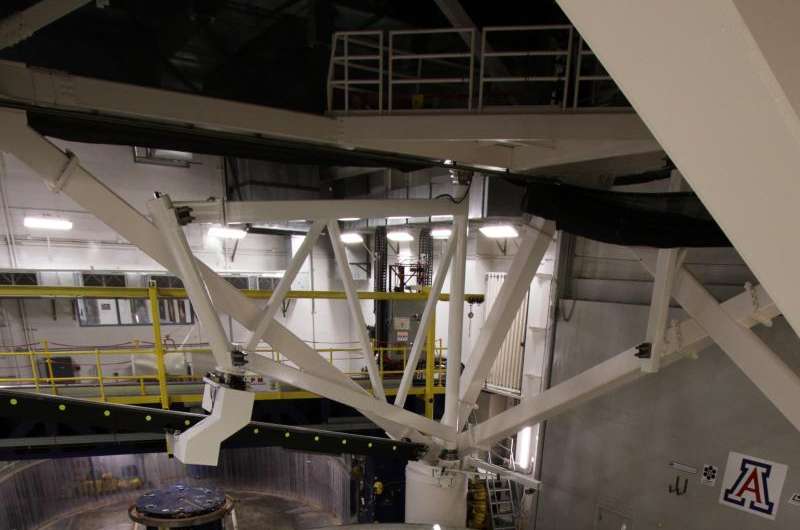Construction to begin on largest telescope

The Giant Magellan Telescope Organization announced Wednesday that its 11 international partners have committed more than $500 million to begin construction of the first of a new generation of extremely large telescopes. Once it is built, the Giant Magellan Telescope is poised to be the largest optical telescope in the world.
The telescope's seven mirrors, produced at the University of Arizona, will focus more than six times the amount of light of the current largest optical telescopes into images up to 10 times sharper than those of the Hubble Space Telescope. The GMT will enable astronomers to look deeper into space and farther back in time than ever before.
The GMT aims to discover Earth-like planets around nearby stars and the tiny distortions that black holes cause in the light from distant stars and galaxies. It will reveal the faintest objects ever seen in space, including extremely distant and ancient galaxies whose light has been travelling to Earth since shortly after the Big Bang, 13.8 billion years ago. The telescope will be built at the Carnegie Institution for Science's Las Campanas Observatory in the dry, clear air of Chile's Atacama Desert, in a dome 22 stories high. It is expected to see first light in 2021 and be fully operational by 2024.
"The GMT will herald the beginning of a new era in astronomy," said Wendy Freedman, chair of the Giant Magellan Telescope Organization board of directors and professor of astronomy and astrophysics at the University of Chicago. "It will reveal the first objects to emit light in the universe, explore the mysteries of dark energy and dark matter, and identify potentially habitable planets in the Earth's galactic neighborhood. The decision by the GMTO partner institutions to start construction is a crucial milestone on our journey to making these amazing discoveries using state-of-the-art science, technology and engineering."
The telescope's light-gathering surface, spanning 82 feet, will be comprised of seven separate 8.4-meter (27-foot) diameter segments. Each mirror segment weighs 17 tons and takes one year to cast and cool, followed by more than three years of surface generation and meticulous polishing at the Richard F. Caris Mirror Lab of the UA's Steward Observatory. Funding for the project comes from the partner institutions, governments and private donors.
"The University of Arizona is very proud to be part of the international partnership building the GMT, and our faculty and students are looking forward to using the GMT to explore the universe in new and exciting ways," said Buell Jannuzi, director of Steward Observatory and head of the UA's Department of Astronomy.
GMTO President Edward Moses said, "The GMT is a global scientific collaboration, with institutional partners in Australia, Brazil, Korea, the United States and in its host nation, Chile. The construction approval means work will begin on the telescope's core structure and the scientific instruments that lie at the heart of this $1 billion project. Early preparation for construction has included groundwork at the mountaintop site at Las Campanas in northern Chile, and initial fabrication of the telescope's seven enormous primary mirror segments."
Professor Matthew Colless, vice chair of the board of directors and director of the Research School of Astronomy and Astrophysics at the Australian National University, said the construction approval was an exciting moment for astronomy.
"Plans that have existed only in two dimensions or as computer models are about to become a three-dimensional reality in glass, steel and high-tech semiconductor and composite materials," Colless said. "The GMT will provide astronomers and astrophysicists with the opportunity to truly transform our view of the universe and our place within it."
Provided by University of Arizona

















